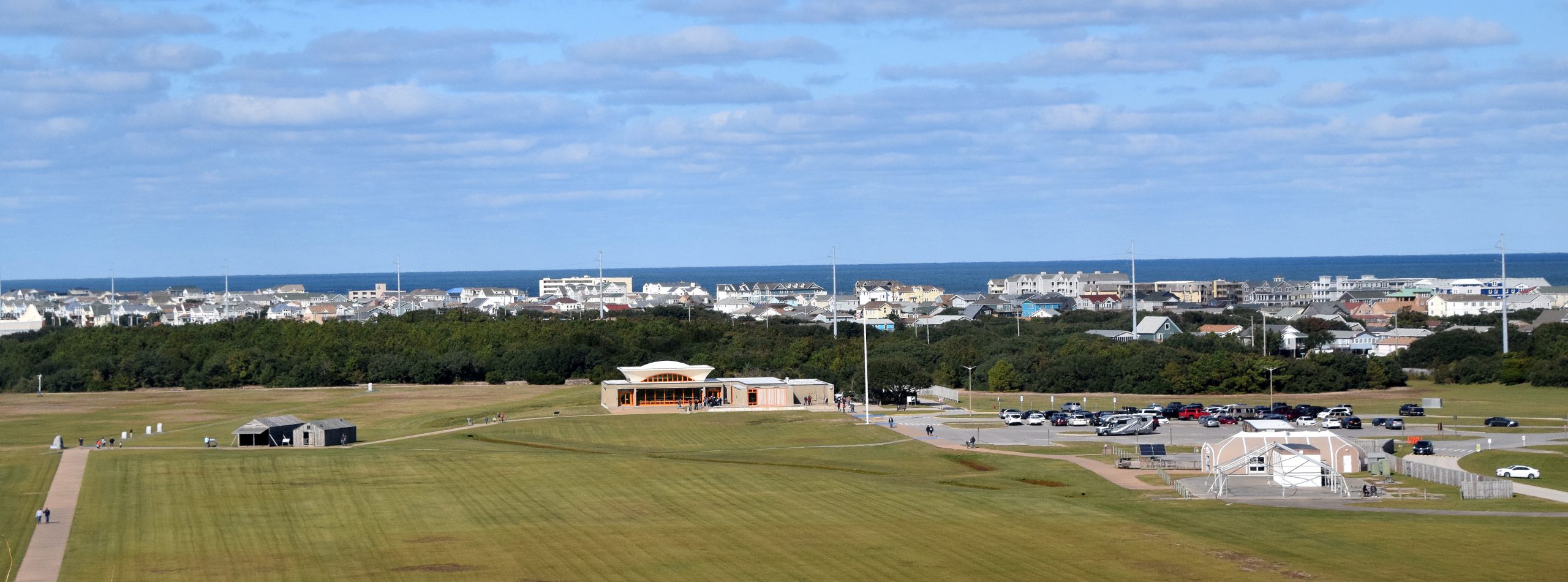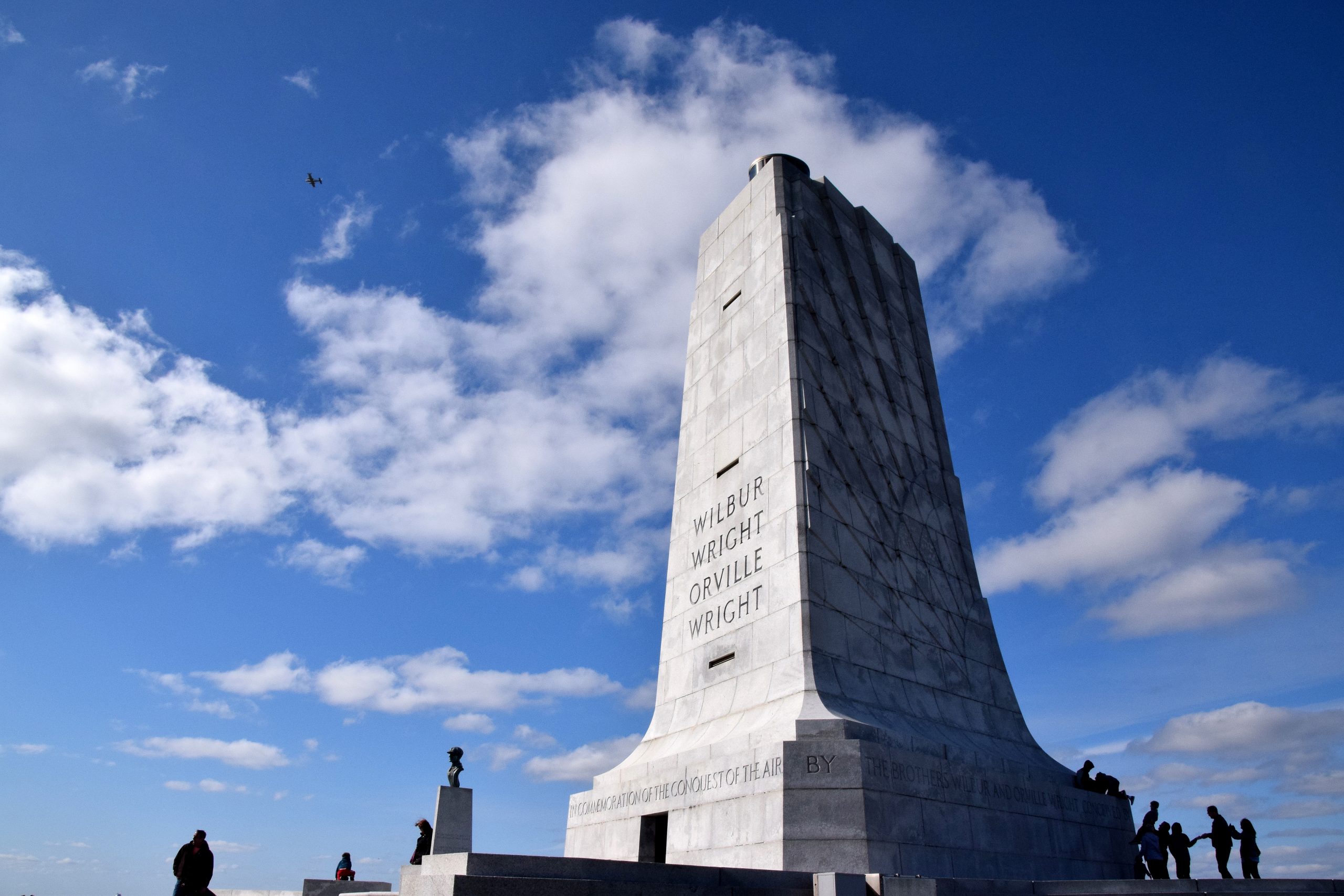KILL DEVIL HILLS — Visiting Wright Brothers National Memorial doesn’t require wilderness gear, but good walking shoes would definitely be in order. And maybe an umbrella. Beyond the visitor center, there currently are no covered areas to duck under and no benches to rest a spell.
“We have school groups that come from all over the region,” Dave Hallac, superintendent of the National Park Service Outer Banks Group, said in a recent interview. “It can be up to 150 kids and we don’t have a shelter for those kids.”
Supporter Spotlight
But now, with an amendment to the 1997 park management document finalized late last year, Hallac said that the National Park Service plans to build an open-air shelter and many other long-sought improvements at the 428-acre national memorial, which memorializes the Wright brothers’ first heavier-than-air manned flight on Dec. 17, 1903.
Unlike being inside the climate-controlled visitor center at the park, exploring the park grounds leaves visitors exposed to the whims of weather that tormented the Ohio brothers during their four years of flight experiments at the site. The new plan aims to improve the outdoor visitor experience, which has not changed much since 1960.
Upgrades would not only offer some protection from the elements during interpretive talks, Hallac said, they would also provide more informational signage, improved parking, new access paths, better views and possibly even a ranger-operated electric tram to carry visitors around the park.
“We are working to prioritize the projects/actions in the plan and researching options to fund the projects,” Sarah B. Merrill, management analyst with the National Park Service Outer Banks Group, said in an email.
In addition to seeking competitive funds within the agency for construction and other needs, Merrill said that the park is also working with its philanthropic partner, Outer Banks Forever, to find grant funding for outdoor interpretive exhibits.
Supporter Spotlight
Although the total cost of all planned projects is estimated in the millions of dollars, she added, specific prices are not possible until each project is ready to be performed because of uncertainty of labor and materials costs.
When people step outside the visitor center, they’ll typically head first to the historic flight path, where a granite boulder marks the takeoff spot of the first flight, followed by three smaller markers indicating the landing sites of the successive flights that morning. Nearby, there is a replica of the Wrights’ hangar and cabin.
Then, they’ll want to head over to the obelisk granite Wright Monument atop 90-foot-high Big Kill Devil Hill. In between, stretching north-south from the fourth landing site to the hill, is the 2,852-foot-long — more than a half-mile — by 750-foot-wide grassy “mall,” with a series of roads and pathways that lead to other paths that wind up and around the hill.

“It is a long walk from the museum up to the memorial on the hill, so be prepared,” noted visitor Bostraveler in a December 2020 comment on Trip Advisor.
Still, as another commenter, jgwisdom, noted, people can choose to drive to see the monument and the First Flight Sculpture that is behind it. (Bicycles are also permitted.)
“I would suggest you go directly to the visitor center, walk around and read up and then drive around the Big Kill Devil Dune and stop and climb up to the monument,” the commenter wrote. “Walk back down to your car and then ride around to the replica of the first flight for a few minutes. Well done place, and worth a visit.”
Challenges aside, the walk can be an inspiring way to appreciate the profound history that took place in that very spot, especially on a pretty spring or fall day. But when the notorious Outer Banks weather acts up — an oft-noted feature during the park’s annual December anniversary of flight events — the expanse of open, flat field offers no place to sit and no relief from wind or rain or summer’s blazing sun and heat.
That is one complaint that the new plan will address, Hallac said, at least in part.
“We are going to selectively add some benches, interpretive signs and shaded rest stops,” he said.
There will be more shade trees, he explained, but also an overall better use of vegetation. For instance, some will be thinned or removed to improve the view shed between First Flight Airstrip and the monument, and some will be added to screen historic views and provide shelter.
In addition, the plan calls for removal of remaining temporary infrastructure — foundation pads, a trailer and a restroom building — built for the 2003 centennial event, and construction of new staff offices and recreational vehicle sites for volunteers and staff. The park will also work with the town of Kill Devil Hills on possible future development of its 15-acre parcel on the east side of U.S. 158, potentially for overflow or bus and RV parking.
The General Management Plan Amendment Environmental Assessment was released for public review in August 2020. Of the 15 comments received, most were in favor, according to the final document.
Other actions in the approved amendment include the following:
- Redesign parking at the visitor center.
- Build new trails and multi-use paths alongside the Mall and between the Monument and the parking lot.
- Work with the state Department of Transportation and the town of Kill Devil Hills to connect the walkway between Landing Drive and Colington Road.
- Construct a 150-person capacity, open-air pavilion near the visitor center for interpretative talks and educational presentations.
Restoration of the 60-year-old visitors center completed in 2018 upgraded the museum and flight room auditorium space, including a modernized exhibit area with additional authentic Wright artifacts.
The circulation pattern within the park is largely a remnant of the original design known as Mission ’66, a 10-year, mid-century park service program that focused on the visitor experience rather than commemoration. The Wright Brothers’ Visitor Center was the first of the modern architectural design to be built in the park system.
Often, there is traffic congestion on busy days by the visitor center, and although there are spaces for oversized vehicles, many times they’re filled by cars.
Parking fills up most days during peak visitation, and circular roadways and paths beyond the fee booth can be confusing.
“Believe it or not,” Hallac said, “there’s like seven different entrances and exits.”
Although the timing of the improvements is subject to funding, Hallac said he expected that, “we’ll begin some of this work in the next 12-18 months.”
Next up on the radar screen: a complete restoration of the moisture-plagued Wright Monument. But that, Hallac said, will be several more years and several more million dollars down the road.










